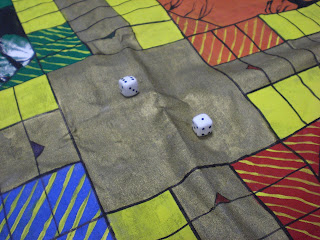
Game name: The Game of We; A Private Emotion
Inspiration: Since coming to Duke, I have been exposed to a myriad of experiences. One of the most significant experiences thus far has been the relationship I have entered into with my boyfriend. It is my first serious relationship and has been a lens which has colored the different trials and tribulations I have faced since coming to college. I wanted to make a game that was eloquent and personal for me, which led me to craft a game that conveyed my perception and gauge on my relationship. I decided I wanted to play off of the cliche "game of love". I have heard it a multitude of times throughout my life, yet I have never developed a meaning for this phrase. I thought about what the "game of love" meant in confines of my own relationship and how I could craft that into a game, however, I struggled to give the phrase life or meaning. I came to the conclusion that I do not view our relationship as a win or lose situation. There is no start and finish with a straight or twisted trail in between. There is not one point of convergence or divergence. The starting line of our relationship is not clearly defined for me because the process of forming my own identity and finding 'me' is an important aspect of our relationship. A relationship cannot form without solidifying the 'me' position. The finish line is equally ambiguous as the start. Some would say that the finish line is defined as a break up or death of a loved one, however I disagree because a meaningful relationship never dies. Given this I knew constructing a functional game was going to be impossible for what I was trying to achieve.
Inspiration: Since coming to Duke, I have been exposed to a myriad of experiences. One of the most significant experiences thus far has been the relationship I have entered into with my boyfriend. It is my first serious relationship and has been a lens which has colored the different trials and tribulations I have faced since coming to college. I wanted to make a game that was eloquent and personal for me, which led me to craft a game that conveyed my perception and gauge on my relationship. I decided I wanted to play off of the cliche "game of love". I have heard it a multitude of times throughout my life, yet I have never developed a meaning for this phrase. I thought about what the "game of love" meant in confines of my own relationship and how I could craft that into a game, however, I struggled to give the phrase life or meaning. I came to the conclusion that I do not view our relationship as a win or lose situation. There is no start and finish with a straight or twisted trail in between. There is not one point of convergence or divergence. The starting line of our relationship is not clearly defined for me because the process of forming my own identity and finding 'me' is an important aspect of our relationship. A relationship cannot form without solidifying the 'me' position. The finish line is equally ambiguous as the start. Some would say that the finish line is defined as a break up or death of a loved one, however I disagree because a meaningful relationship never dies. Given this I knew constructing a functional game was going to be impossible for what I was trying to achieve.
I decided that my boyfriend and I would be the 'game board'. The first striking aspect of the game board is that we are both scantly clad. This is traditionally a very vulnerable situation, however, I believe we have reached a state of complete comfort with each other. The stripped figures are representative of both the physical and mental position of our relationship. He has accepted me, flaws and all, and visa versa. The figures are unaware and unashamed at their current state, and it is reflected in the positions which they are posing. They are not attempting to hide or cover anything they perceive as imperfect.
I decided to apply the game board to their skin. However, I had a difficult time envisioning how the paths on the figures correlated with each other. I eventually decided that the path that our relationship has taken is not so defined and therefore this trail was not intended for us. I believe the people who do not know how love works are on a constricted path. Love is multifaceted and cannot be defined by one moment, or one space on the game board.The pawns on the bodies represent all the people who tried to date or fall in love with us. Those individuals who are enamored with the physical, dwell on the minute details or love with a tunneled vision. These pawns are traveling down a path with no beginning or end. Ultimately their trip serves no purpose because they have no great meaning on he nor I.
However, their is a game being played. It is the process of crafting 'we' which is a game. This is represented by the two colors that each figure possess. My blue and his purple represent our definition of 'me'. In the image, my blue is beginning to infiltrate his purple and visa versa. This represents that we have started the process of creating a 'we' from two distinctive personalities, yet at the same time still maintaining our base color because in our game of forming a 'we' neither he nor I have lost our individuality.

























































